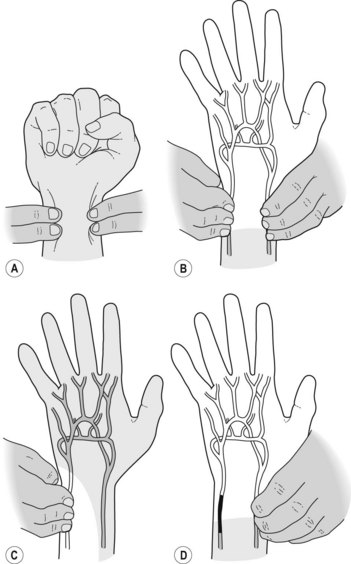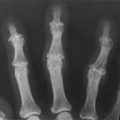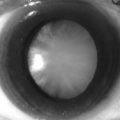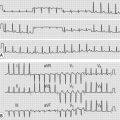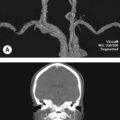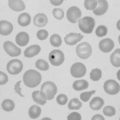30 Absent radial pulse
Diagnosis
This patient has an absent radial pulse (lesion) that is caused by a previous Blalock–Taussig shunt.
Questions
What are the causes of absent radial pulse?
• Aberrant radial artery or congenital anomaly (check the brachials and BP)
• Tied off at surgery or previous surgical cut-down
• Catheterization of the brachial artery with poor technique
• Following a radial artery line for monitoring of blood gases or arterial pressure
• Blalock–Taussig shunt on that side (shunt from subclavian to pulmonary artery)
• Embolism into the radial artery (usually caused by atrial fibrillation)
Advanced-level questions
What is Adson’s test?
The clinician palpates the radial pulse and abducts the arm slightly (Fig. 30.1). The clinician asks the patient to hyperextend the neck and turn it to the affected side and inhale deeply. Adson’s test is positive if the patient reports paraesthesias or if the pulse fades away. Diminution or obliteration of the pulse probably is caused by compression of the axillary artery by the anterior scalene muscle. The patient should turn the head to the opposite side (reverse Adson’s test) to test compressive effect of the middle scalene.
What is the Allen test?
The Allen test is used to determine patency of radial or ulnar artery (Fig. 30.2). To perform an Allen test, both the radial and the ulnar artery should be occluded while the atient elevates the hand and makes fist. The patient extends the fingers and blanching of the hand is seen. When the radial artery alone is released, and colour of hand returns to normal. An abnormal test result occurs when the colour of the hand does not return within 5–10 s. In thrombosis of the ulnar artery, the hand remains blanched when this artery alone is released. Allen’s test can be used before puncturing the radial artery for cannulation as it is important to identify a competent ulnar artery should injury to the radial artery occur.


